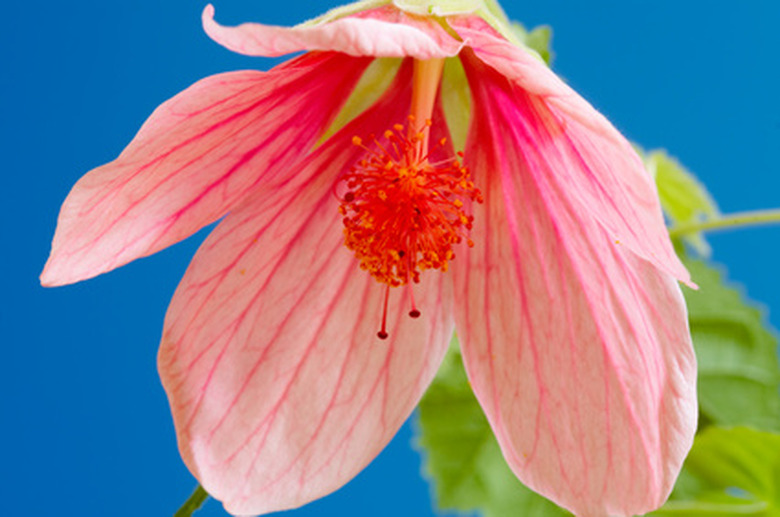How To Propagate Abutilon
Things Needed
- Sharp pruning shears or knife
- Plastic bags
- Moist paper towel
- Planting pot
- Perlite
- Peat moss
- Rooting hormone
- Piece of wire or a coat hanger
The abutilon is commonly known as flowering maple, because its foliage resembles that of a maple tree, and is related to the hibiscus. Abutilon flowers look a lot like hibiscus and bloom in many of the same shades. Abutilon is generally grown as a houseplant outside of the warmer, tropical regions of the United States and requires filtered sunlight and consistent fertilization during the growing season. Hardy to USDA zones 10a to 11, abutilon will readily propagate from softwood cuttings (green stems that are just beginning to harden), taken in late spring.
Step 1
Cut 4 inches from the tip of an abutilon branch, below a node (area of the stem where a leaf joins it). It should be new growth that is just beginning to harden. If you can bend the branch without snapping it, it is softwood. Cut at a 45-degree angle. Place the cutting in a plastic bag on top of a moist paper towel and keep it out of direct sunlight.
- The abutilon is commonly known as flowering maple, because its foliage resembles that of a maple tree, and is related to the hibiscus.
- Hardy to USDA zones 10a to 11, abutilon will readily propagate from softwood cuttings (green stems that are just beginning to harden), taken in late spring.
Step 2
Remove all flowers and leaves from the cutting with the exception of three or four leaves at the top.
Step 3
Fill the planting pot with a mixture of 80 percent perlite and 20 percent peat moss. Moisten the planting medium until the water drains from the bottom of the pot. Allow the pot to drain completely. Using your finger or a pencil, create a planting hole in the soil.
Step 4
Dip the cut end of the branch, up to at least two leaf nodes, into the rooting hormone and then stick it into the planting medium. Ensure that at least two leaf nodes are buried.
- Remove all flowers and leaves from the cutting with the exception of three or four leaves at the top.
- Fill the planting pot with a mixture of 80 percent perlite and 20 percent peat moss.
Step 5
Bend a piece of wire or a coat hanger into a U shape, turn it upside-down and poke the ends of it into the soil at the edges of the planting pot. The top of the wire structure should extend at least 2 inches above the cutting.
Step 6
Place the pot in a plastic bag and adjust the plastic over the wire structure so it is not touching the cutting. Seal the bag and place it in an area that receives sunlight (but out of direct sun) and remains above 70 degrees F. The abutilon cutting should root within four to six weeks.
